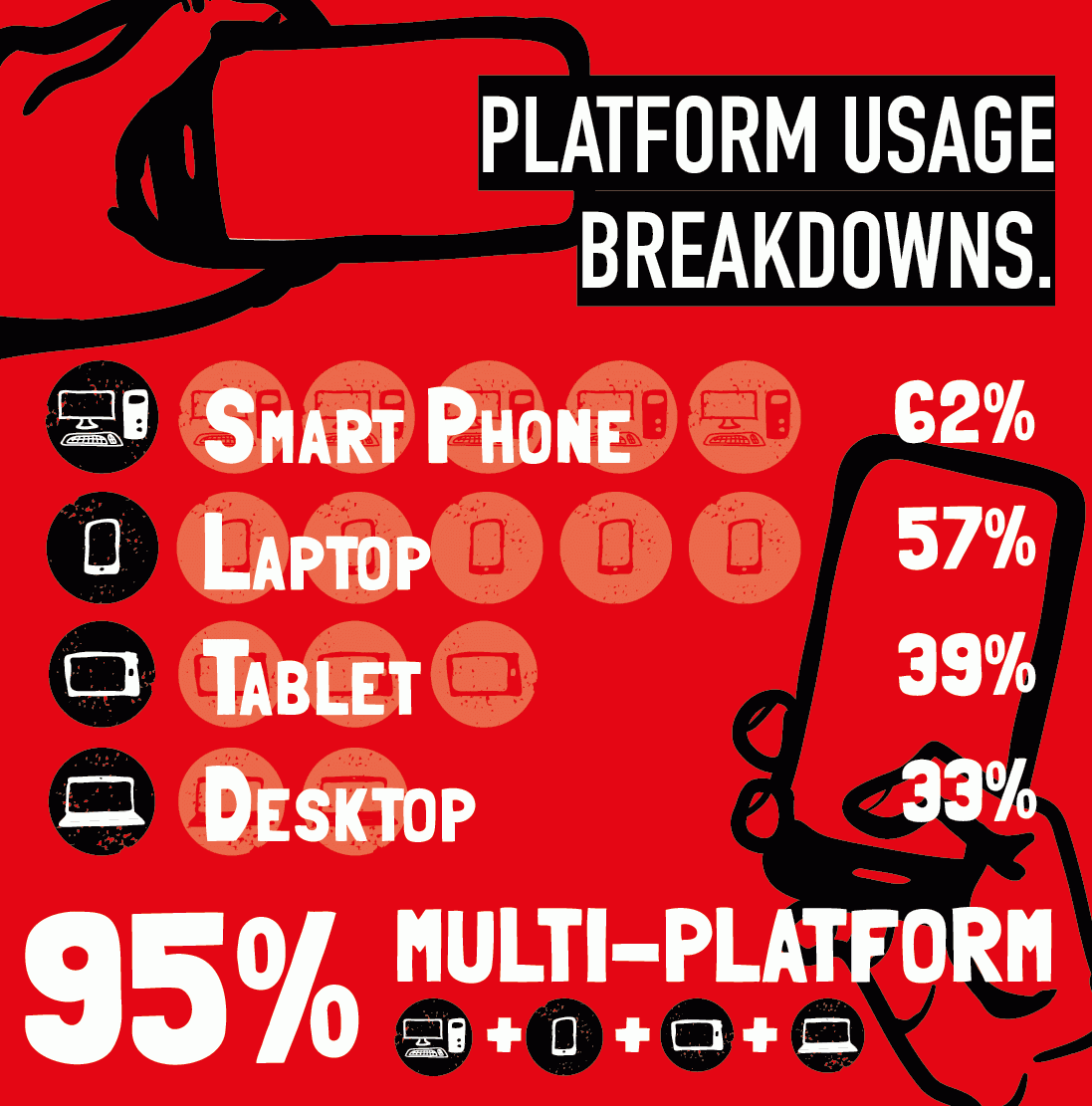For media and PR professionals it has never been as important to have a grasp on the way media is consumed. The digital media revolution has happened at such a pace that the term itself has almost become outdated. Guardian chief exec Andrew Miller coined “global news media” to better describe the next horizon of digital publishing that has outgrown terms such as “new media” or “digital“, but for PR professionals there’s considerable evidence to suggest “generation multi” is the next big thing with arguably more sticking power than any evolution in the past.
New research has found almost half (48 per cent) of people now consume media across multiple channels and some 95 per cent of people consume media on multiple devices. This shift has implicated both the way in which we consume media and the way in which it is delivered, with an impetus on how to reach people who have patience at a premium and a thirst for more visual content.

The Daily Mail is a case in point. Although the Mail remains the most-read print publication, the study from multi-platform content specialist 72point shows that 5 per cent more people now read the Mail Online, which has notably altered its content offering in favour of more multimedia content and “list” features. Of the top five digital arms of print titles – Mail Online, The Guardian, The Mirror, The Sun, Metro – multimedia content is a chief focus.
As well as implicating existing publications the digital revolution has added a flurry of new media which cater for online consumption habits, namely by being easily digestible and specialised. The blogconomy attracts 77 per cent of online users and our demographical research suggests modern media consumers pick from a “personalised newsstand” whereby their personal preference heavily dictates which media they consume.
Social media has impacted both the traffic and consumption of media creating a consumer-led media industry. The “lists, gifs, pictures and posts” nature of social media has shaped current publications and created popular viral sites, but pertinently it has replaced top-down behaviour where news editors pick what media we consume in favour of a social media-led approach where our friends are the editors.
More than a third (34 per cent) of people rely on social media to get their news fix with video content ranking as the most shareable across the board. Certain strategies to garner social media audiences such as Clickbait are shown to be already dated with as little as 16 per cent of people saying such techniques would make them click through to media. Instead the case for targeted posts is gaining credibility and already has significant uptake with media outlets such as Buzzfeed, Mail Online and the Guardian owning tens upon tens of specialist Twitter accounts.
In summary, the research shows that consumers of media now transcend platforms which has implicated the way news is delivered. For PR professionals having an awareness of modern consumption trends and an ability to work in a multi-platform environment is key in order to capturing wider audiences.
Background
The 72Point 2015 Media Consumption report was conducted in February 2015 and is based on the responses of 7,500 UK consumers of media and looks to address the changing ways in which we consume media. The report explores the platforms and channels we consume media on, how mainstream media titles have confronted digital, the rise of new publications and the way social media has impacted traffic and consumption of media.
Written by Jack Peat, head of digital at 72Point
PRmoment Leaders
PRmoment Leaders is our new subscription-based learning programme and community, built by PRmoment specifically for the next generation of PR and communications leaders to learn, network, and lead.
PRmoment LeadersIf you enjoyed this article, sign up for free to our twice weekly editorial alert.
We have six email alerts in total - covering ESG, internal comms, PR jobs and events. Enter your email address below to find out more:









